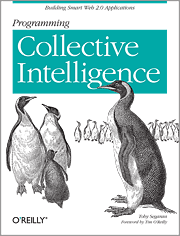The Crippled God, by Steven Erikson
 Somehow I have managed to read the tenth and final book in Steven Erikson's Malazan Book of the Fallen series: The Crippled God. Almost a year ago I was saying "I doubt the tenth book will be able to satisfyingly end the story." and I have to agree with myself :)
Somehow I have managed to read the tenth and final book in Steven Erikson's Malazan Book of the Fallen series: The Crippled God. Almost a year ago I was saying "I doubt the tenth book will be able to satisfyingly end the story." and I have to agree with myself :)The book continues where Dust of Dreams ended, but introduces even more characters, all amassing towards a grand finale. But is it grand? And is it, or should it be, a finale? I dare say no, but first a little bit about the content of the book.
The adjunct Tavore does for the entire book things that not even the characters understand. More than that, they follow her, all the time acknowledging that they don't know why. While this may work for short periods of time, it gets annoying and breaks one of the tenets of book writing: allow the reader to sympathize with the characters. How can you, if you don't understand what they are doing? Combine that with Erikson's style of beginning chapters without disclosing who the characters are and having to wait for a few paragraphs before using any names, and you get a book that is hard to enjoy without giving it all your attention. And when you do, people start sobbing and having "raw feelings" and understanding a world of pain from a single word and what not.
To summarize, I believe Erikson finally succumbed to the writer curse of trying to force the reader to think like him. In the end, the pleasure of understanding the situation explain by the author and filling in the blanks with your own imagination is replaced with a vast blank instead.
Then there are the tactical situations. After a rather interesting campaign in Letheras in Dust of Dreams we get a long pointless march that makes no sense whatsoever, problems created for no reason and bad solutions for them. The enemy, the Forkrul Assail, are nothing more than glorified Nazis, running around and spreading their own brand of justice, but having small and clichéd thoughts and not much in the way of actual power. They draw extra power from the heart of the Crippled God in order to boost their grand Akhrast Korvalain magic, but when it is time to unleash it, it pretty much duds, making the reader wonder what the hell happened. Also the military strategy makes no sense whatsoever, down to the individual battles. That could have slipped if Erikson wouldn't have slipped of how Tavore is the greatest strategist of all time. I won't bore you with the details, let's just say that there is much more sobbing than thinking in this book.
And now to return to the grand finale. Not only did I not understand much of it (maybe I am too dumb, who knows?) but it fizzled in comparison to most of the previous books. The battle was not that grandiose, the scheming something only a god would understand, the characters rather bland, the sobbing (did I mention it?), even the Malazan marine was boring in this book. I did enjoy it, but it all felt rushed and soulless. A lot less than I have imagined the ending of this great series to be.
The last qualm I have is with another writer trap: the desire to finish up in a clean way. It has to end with Apsalar in her village and the two meddling Shadow gods like the first book began. It had to end a lot of the pieces of stories sprinkled throughout the books. It had to save people that suffered and have couples reunited. This could have worked for a romantic comedy with werewolves, for example, but not for a series of books that never wasted time on finding boring beginnings and useless endings for its many threads.
The ending of the book betrayed the eight preceding books and some of Ian Cameron's. Perhaps the many voices of the characters always whispering in Steven Erikson's ears for twenty years have finally driven him mad. Or maybe he just got bored.













